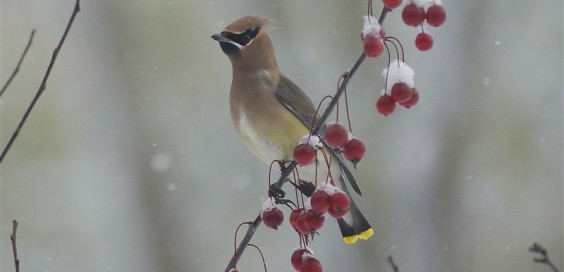
Creature Feature – The Cedar Waxwing
Posted by Dustin Horton // December 18, 2018 // Articles, Creature Feature
These beautiful, masked birds are nomadic, moving about depending on the food supply. They’re named for bright red waxy spots found on the wingtips of the adult birds. Waxwings travel in flocks, foraging together on berries, small fruits and insects. They will also eat some flowers and oozing sap. Some of their favorite berry-bearing trees are cedar, juniper, dogwood, serviceberry, crabapple and wild cherry. If you have any of these trees in your yard, Cedar Waxwings will likely come a-calling. Listen for their high-pitched, sighing whistles and “bzeee” calls as they flap and flutter among the branches, plucking berries and swallowing them whole. A sociable bird, even in nesting season, they will pass berries back and forth to one another until one bird eventually eats the berry. Waxwings don’t start nesting until mid-summer. The female selects the site and does most of the nest construction. The pair may steal building materials from neighboring nests. They guard just a small area of territory, so other waxwings may have nests close by, forming a little colony. At first, hatchlings are fed high-protein insects, and then berries are added. Cedar waxwing populations are increasing in some places where fallow fields revert to woodlands. They’re also benefiting from the planting of berry-bearing trees in landscaping projects.
Article & Photo by Margie Manthey












